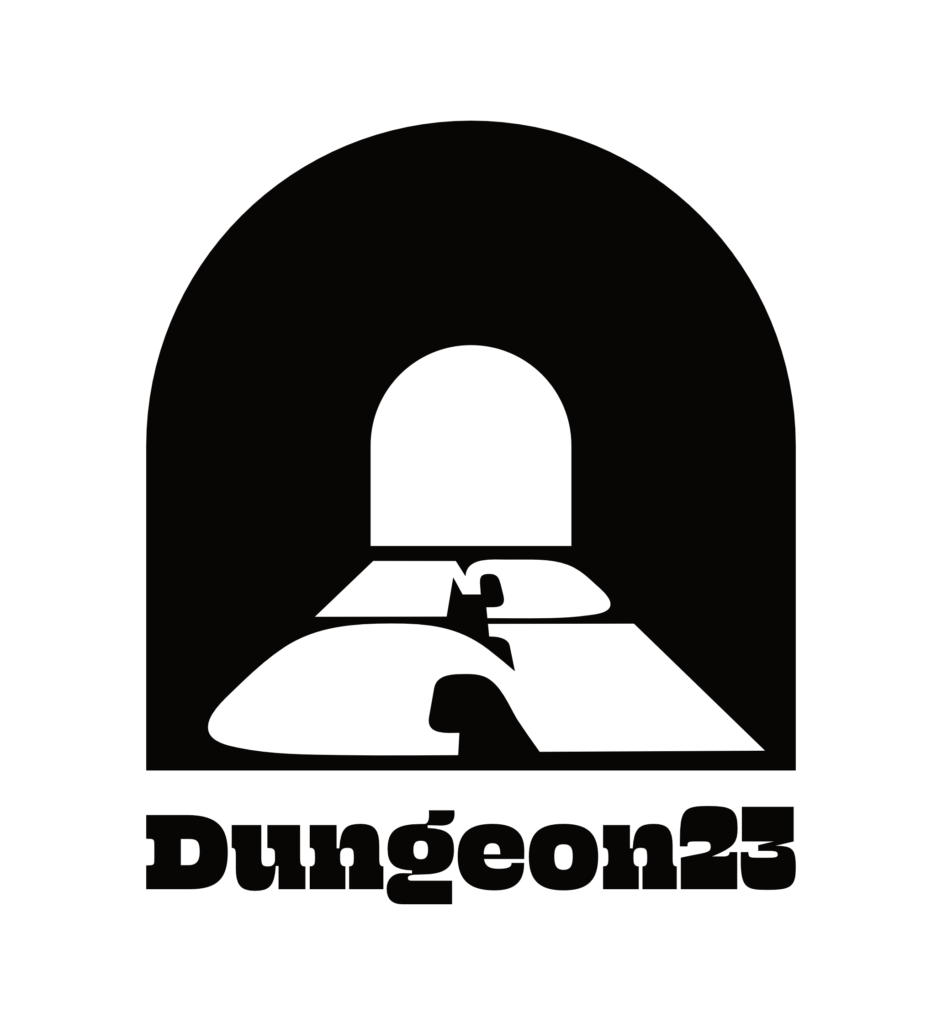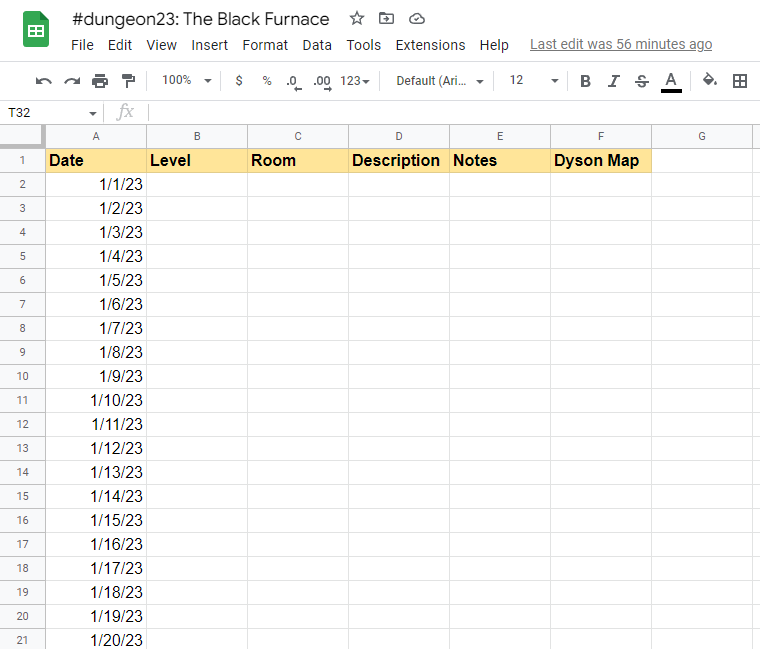Sean McCoy‘s #dungeon23 challenge has been making the rounds on Mastodon: Every day in 2023, write one room of an old-school fantasy megadungeon (or whatever similar project tickles your fancy). I’ve been intrigued, but felt like I didn’t really need another project next year — until this morning, when the puzzle pieces fell into place.

These days I do best with long-term projects that I can 1) work on every single day, no exceptions, and 2) just “check the box” if I don’t have the energy today. That means projects with lots of variety in their components, and which can survive banking the fires — basically only working on them in the most technical sense, like a dab of paint or writing a single name — while I recharge my creative juices or deal with life’s curveballs.
This is how Godsbarrow got created, and how I’ve worked on it daily since March 2021. It’s how I wrote and published The Unlucky Isles [affiliate link]. It’s how I work on my 40k miniatures. It prioritizes continuation, completion, and realistic expectations — and it’s baked right into #dungeon23. There’s tons of variety (365 rooms!), and writing “Empty room” is a 100% valid and necessary component of any megadungeon.
Sean’s longer write-up makes that explicit, and it’s what really sealed the deal for me. After many past false starts, I’m going to take a run at creating my first megadungeon: the Black Furnace, my favorite dungeon that I’ve mentioned in my Godsbarrow material.

My approach
I get the appeal of working on #dungeon23 in a physical notebook with hand-drawn maps; that will produce a lovely artifact at the end of the year, and it hearkens back to the origins of the hobby. But my handwriting is terrible, I won’t always have that notebook handy, I know drawing dungeon maps is a roadblock for me (I always get too deep in the weeds and then abandon the project), and ultimately whatever I produce is likely to be something I want to publish — so why make more work for myself by doing it by hand?
Once I knew that, the rest of my path became pretty clear. Here it is in rough form, as it stands now:
- Google Sheets: I’ll be creating my megadungeon in Google Sheets. Easily updateable and editable, always available, and already digital.
- Dyson Logos’ maps: I’m going to use some of the wonderful maps created by Dyson Logos — specifically, the ones Dyson has generously released with a royalty-free commercial license. If I finish my dungeon and like it enough to publish it, this makes that possible.
- OSE: Old School Essentials is my old-school system of choice, and the game I’d most likely use to run a megadungeon, so that’s sorted. And OSE has a third-party license for published products that looks entirely reasonable, so I’m covered there as well.
- Dungeon stocking: That also means I can use the OSE rules for random dungeon stocking, which I quite like. That breaks down to 1/3 empty rooms, 1/3 monster, 1/6 special, and 1/6 trap.
- I might also use the method from AD&D 1e, which comes up in Courtney’s PDF (the next bullet).
- Random generators: I love random generators, and with 365 rooms to write (even if 122 of them are empty!) I’m going to need plenty of inspiration. There are a billion tools for this, but I’ll start with two.
- Sean suggests the first one in his write-up: Courtney Campbell’s Tricks, Empty Rooms, and Basic Dungeon Design [affiliate link], which Courtney wrote back in 2011.
- The second one is from my go-to random generator site, donjon: the excellent d20 Random Dungeon Generator.
- A snazzy logo: Lone Archivist created a free #dungeon23 logo pack (as well as one for sci-fi projects) with a CC BY 4.0 license.
That’s the how, but what about the what?
The Black Furnace
I created the Black Furnace when I was designing the Unlucky Isles, and I like how it turned out. Even though it’s only a region-level sketch, that’s plenty to get me rolling on room-by-room creation (which is one of the things I love about region-level sketches!):
This black stone kiln the size of a large house, its soot-covered iron door always warm to the touch, rises from the earth during times of great strife. It was thought to have receded from the world centuries ago, but in recent days trappers and woodcutters who work the Hulawe Hills claim to have seen this fell edifice, and those who have gone to look for it have not returned. Folk tales say that it’s the entrance to a sprawling subterranean maze, or to the realm of a long-forgotten god, or a maw which releases ancient monstrosities into the world. In truth, the Black Furnace is all three of those things, and its reappearance bodes ill for Brundir.
From The Unlucky Isles [affiliate link]
That’s got all the bones I need for #dungeon23: A sprawling subterranean maze: check. The realm of a long-forgotten god, which hearkens back to one of my favorite modules, Tomb of the Iron God [affiliate link]: check. A maw that spews monsters, which is already giving me all sorts of ideas: check. And potential region-level, world-shaking implications, which I love in a dungeon: check.
In the spirit of drawing from my first Godsbarrow and proto-Godsbarrow ideas for worldbuilding, I’m going to reuse, remix, and draw from the megadungeon I started designing back in 2016, Marrowdark. (I’ll likely use that name for something else in Godsbarrow — maybe even a dungeon; it’s the ideas I’m after here.) Some of the rough clay in those notes has already made its way into wider Godsbarrow, notably the null slimes of Middenglum, and I want to explore more of its themes.
Many thanks to Sean McCoy for kicking this off, and for posting about it well in advance of the start date! I needed that time to get my ducks in a row and think things over, and now I’m excited to get rolling in January.
